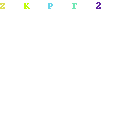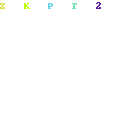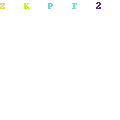 The history of cinema is as much the history of its formal
engagements as that of its technical innovations. Thirty years after it came into
existence, cinema finally manages to marry audio to visual and that give birth
to first talkie. That was 1927 and the film was called Jazz Singer, whose first
lines “YOU AIN’T HEARD ANYTHING YET”
The history of cinema is as much the history of its formal
engagements as that of its technical innovations. Thirty years after it came into
existence, cinema finally manages to marry audio to visual and that give birth
to first talkie. That was 1927 and the film was called Jazz Singer, whose first
lines “YOU AIN’T HEARD ANYTHING YET”
Suddenly there was a paradigm shift from the story narrative
to performances and audiences loved every bit of it. The advent of digital technology
marks yet another bend in the long road of cinema history. Paradigms are
shifting one more in terms of representations, narratives and the business of
movie making. What digital means technically is that picture and sound are
converted to the binary digitals of 1 and 0. This data can be stored,
manipulated and transmitted by computers. Once the audio & visual
information starts existing in a digital form, a whole lot of possibilities starts
opening up in front of the director. The digital technology first made its presence in the 80s
and around the 90s it started gaining ground. Initially, the low cost of
production (in relation to celluloid) attracted certain section of
communicators for whom the existing mode of production was too prohibitive in
its cost. Today, digital technology has become acceptable not only for its low
cost production but primarily because it has opened up a new set of realities
in terms of image building and their modes of representation which in turn allows
a fresh set of aesthetic possibilities. New spaces are being explored. Elaborate
lighting and mise -en -scene designs have become passé. Noises and grains have
become part of neo vocabulary. Alternative visual punctuation are being articulated,
as dissolve, bleach, wipe…goes out of fashion. And all these are happening not
in Paris, London and Berlin but in Hongkong, Taiwan, India, Iran and most of
developing countries which has so long remained only the underbelly of an
imperial cinematic language.
Digital technology can be used to create new kind of images where fantasy is just a click away. With a suitable software one can digitally alters pictures, like removing a person or adding a building. This changes our basic understanding of photographed reality. In digital era, statements like ‘pictures don’t lie’ and ‘seeing is believing’ are clearly untrue. Digital editing is software based. Such systems are not only user friendly but also help shape new film making styles and techniques such as the use of very short shots, graphics that flow around the screen and objects that seamlessly transform (morph) into other objects. The look of most TV commercials today would not be possible without digital tools.
This digital explosion has been gleefully accepted by alternative film makers. The famous mini DV camcorders are being increasingly employed to tell personal narratives which are quiet invigorating. The results have flooded TV and film festivals. Surprises of surprises, even big production companies have started taking note of such developments. Today they are a lot more amenable to personal stories, which are far removed from the recognized genres of Hollywood. Big matinee idols are lending themselves to thought provoking digital films. A young digital film maker in Delhi or Allahabad can always take heart from the fact that coupled with digital film production is the advent of world wide web in promoting and distributing of film through U Tube, Websites, Blogs, online services and so on. High definition TV is another aspect that has given digital production a boost. Not only does it save time and money, the quality is now high enough that audiences usually can’t tell the difference. There are also digital projectors that 9 million pixels and create super real images that never get scratched or dirty. Digital distribution through the sale of DVD is much more than theatrical tickets sales. Today more foreign films are available on DVD than can be exhibited in a theatre.
Digital technology can be used to create new kind of images where fantasy is just a click away. With a suitable software one can digitally alters pictures, like removing a person or adding a building. This changes our basic understanding of photographed reality. In digital era, statements like ‘pictures don’t lie’ and ‘seeing is believing’ are clearly untrue. Digital editing is software based. Such systems are not only user friendly but also help shape new film making styles and techniques such as the use of very short shots, graphics that flow around the screen and objects that seamlessly transform (morph) into other objects. The look of most TV commercials today would not be possible without digital tools.
This digital explosion has been gleefully accepted by alternative film makers. The famous mini DV camcorders are being increasingly employed to tell personal narratives which are quiet invigorating. The results have flooded TV and film festivals. Surprises of surprises, even big production companies have started taking note of such developments. Today they are a lot more amenable to personal stories, which are far removed from the recognized genres of Hollywood. Big matinee idols are lending themselves to thought provoking digital films. A young digital film maker in Delhi or Allahabad can always take heart from the fact that coupled with digital film production is the advent of world wide web in promoting and distributing of film through U Tube, Websites, Blogs, online services and so on. High definition TV is another aspect that has given digital production a boost. Not only does it save time and money, the quality is now high enough that audiences usually can’t tell the difference. There are also digital projectors that 9 million pixels and create super real images that never get scratched or dirty. Digital distribution through the sale of DVD is much more than theatrical tickets sales. Today more foreign films are available on DVD than can be exhibited in a theatre.
The future of digital film making looks promising. The
medium is young and the time is ripe to jump into the (band?) wagon. As much as
we are aware that a digital picture can near match the depth of a 35 mm film
image, one is also conscious of its fresh narratives possibilities. Recourse to
digital film making is a matter of choice (ideological and asthetical) and
need not necessary be an alternative to ones fulfilled wishes of making a 35 mm
film. Serious digital film makers, globally, are becoming progressively
conscious of the rigors, discipline and respect that this new format demands of
its practitioners.
 |






 The
role of negative hero played by Shahrukh Khan gave a new twist to the
portrayal of character. Films like Baazigar, Darr, Roja, Bandit Queen,
Hum Aapke Hai Koun , Pardes , Taal, Satya, Kuch Kuch Hota Hai, Hum Dil
De Chuke Sanam made Indian audience more open to the character and
subject.
New millennium 2000s decade came up with challenge of digital
technology. Digital photography camera became more famous. Digital Film
making became more easy and cost effective. Film makers like Nagesh
kookanoor made his film with a very low budget film Hyderabad blues. The
other films Monsoon wedding, Mumbai Express followed the league.
Changes and challenges of gender, belief, terrorism, NRI marriage,
collage life and suffocation of city life are handled very effectively.
Indian cinema made a mark for Oscars with the entry of Queen Elizabeth
by Shekhar Kapoor.
The
role of negative hero played by Shahrukh Khan gave a new twist to the
portrayal of character. Films like Baazigar, Darr, Roja, Bandit Queen,
Hum Aapke Hai Koun , Pardes , Taal, Satya, Kuch Kuch Hota Hai, Hum Dil
De Chuke Sanam made Indian audience more open to the character and
subject.
New millennium 2000s decade came up with challenge of digital
technology. Digital photography camera became more famous. Digital Film
making became more easy and cost effective. Film makers like Nagesh
kookanoor made his film with a very low budget film Hyderabad blues. The
other films Monsoon wedding, Mumbai Express followed the league.
Changes and challenges of gender, belief, terrorism, NRI marriage,
collage life and suffocation of city life are handled very effectively.
Indian cinema made a mark for Oscars with the entry of Queen Elizabeth
by Shekhar Kapoor.  Many
regional film makers are making their film with Digital SLR. This
technology offers you an extra ease to move your camera in a small
location. This way we save time and money to make a film. LED lights
have taken the place of earlier Halogen Baby, Multi lights. LED light
can be run on battery or on low energy. This new style of film making
offers speed and accuracy. Nonlinear film editing completes a monstrous
task in few times. The development of technology has not overtaken the
subject of film. Indian cinema has entered in animation and SFX as well.
Films like Krish, Don 2, Agent Vinod, Ek Tha Tigher are the few
examples of this league. Indian regional cinema has made entry in
Hollywood, the Academy of Motion Picture Arts and Sciences have shown
keen interest in preserving the screenplay for their research library.
The script of this film is preserved in museum of Academy awards. As we
have many languages in country and films are also made in many languages
we have a strong base of regional cinema. Regional cinema of south
India and West Bengal is already famous in foreign critics. Now many
film makers are making their films on shoe string budget with the small
but powerful equipments like Digital SLR and portable sound recorder.
The boom in technology has created a platform for Indian directors to
explore the world of storytelling. Impeccable background of poetry,
literature Indian film makers are ready to take the world.
Many
regional film makers are making their film with Digital SLR. This
technology offers you an extra ease to move your camera in a small
location. This way we save time and money to make a film. LED lights
have taken the place of earlier Halogen Baby, Multi lights. LED light
can be run on battery or on low energy. This new style of film making
offers speed and accuracy. Nonlinear film editing completes a monstrous
task in few times. The development of technology has not overtaken the
subject of film. Indian cinema has entered in animation and SFX as well.
Films like Krish, Don 2, Agent Vinod, Ek Tha Tigher are the few
examples of this league. Indian regional cinema has made entry in
Hollywood, the Academy of Motion Picture Arts and Sciences have shown
keen interest in preserving the screenplay for their research library.
The script of this film is preserved in museum of Academy awards. As we
have many languages in country and films are also made in many languages
we have a strong base of regional cinema. Regional cinema of south
India and West Bengal is already famous in foreign critics. Now many
film makers are making their films on shoe string budget with the small
but powerful equipments like Digital SLR and portable sound recorder.
The boom in technology has created a platform for Indian directors to
explore the world of storytelling. Impeccable background of poetry,
literature Indian film makers are ready to take the world. 
